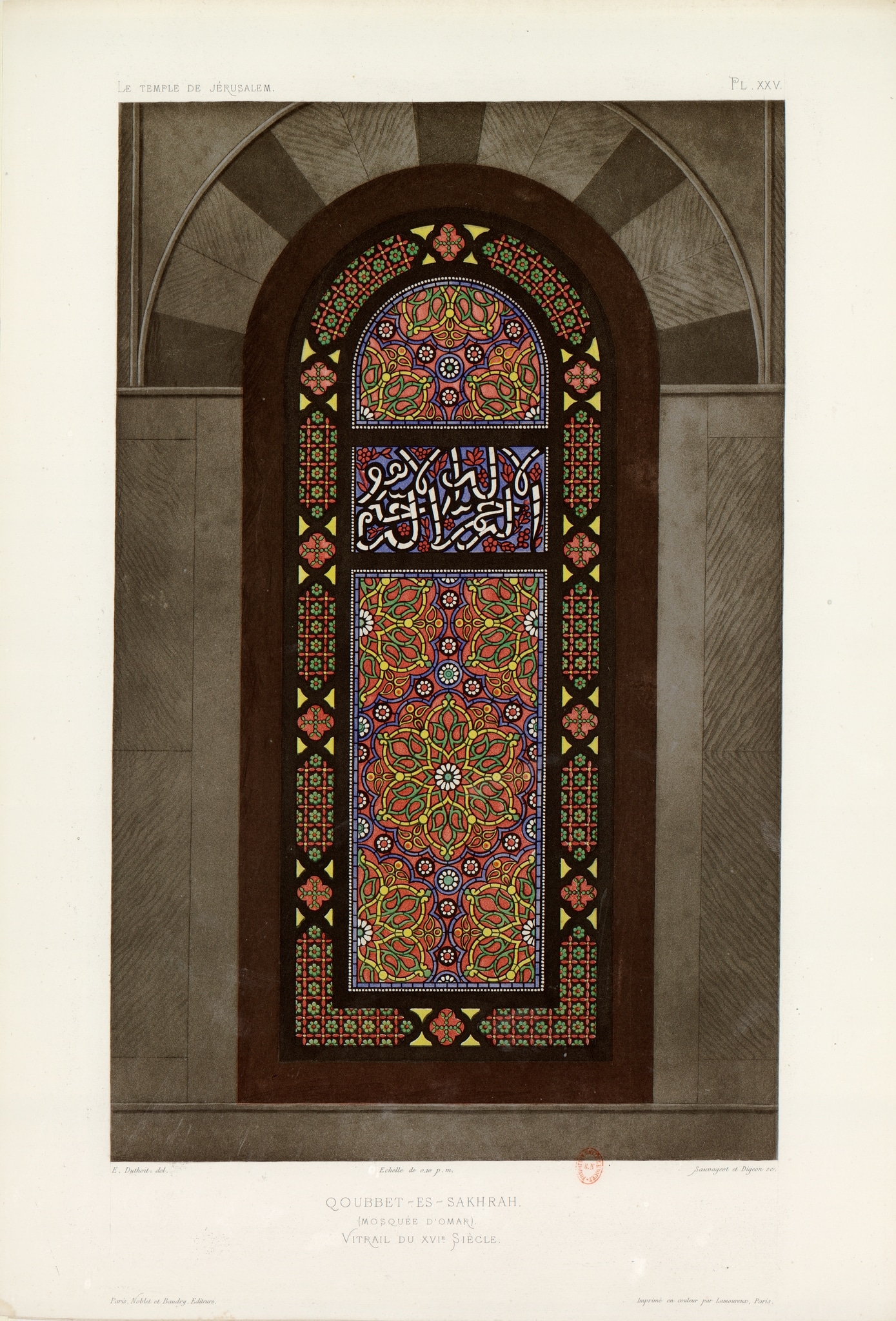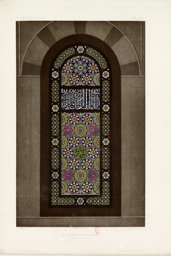Forschung
The three stucco and glass windows illustrated by Melchior de Vogüé were previously in the octagon of the Dome of the Rock in Jerusalem. The qamariyya depicted here was formerly in window 3 of the octagon. It bears a line of the second Sura: [there is no God but He, the Most Merciful, the Most Compassionate: Sura II,163–64].
De Vogüé indicates that the windows are shown at a scale of 1:1000. Furthermore, in comparison with a more recent copy of the octagon window, now in the Haram Museum in Jerusalem, Flood was able to specify the measurements of the original windows: about 325cm by 109cm (345cm by 128cm with the wooden frame). The epigraphic field, measuring 70cm by 37cm, is delineated with a thick border of stucco tracery about 2.5 m wide. The lower rectangular field measures 30cm by 27cm. The outer border, consisting of ovoid cartouches separated by medallions or rhomboids, is 20cm wide (de Vogüé, 1864, p. 96; Flood, 2000, p. 435).
Flood observed that the quadrilobed medallions in the outer border were a typically Ottoman motif that also appears in the tile ornament surrounding the exterior of the window openings, and can be dated to the 10th century AH / 16th CE (Flood, 2000, p. 435). Together with the naming of Sultan Suleiman in the continuous inscription of the windows (see IG_71), they suggest that the windows recorded by de Vogüé in 1864 were the ones installed during the renovation in 1528. In contrast, the windows replaced in 1291 AH / 1874 CE bore the name of Sultan Abdulaziz (Flood, 2000, p. 435).
Datierung
1864
Verknüpfte Standorte
Herstellungsort

